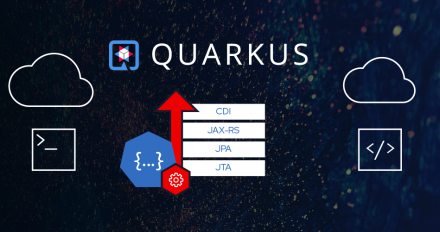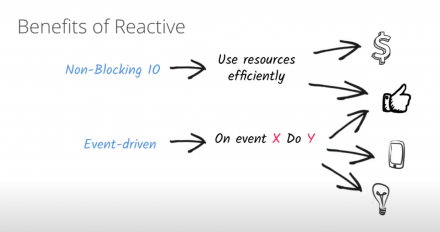
Red Hat Reactive Chief Architect
Clement Escoffier
Clement had several professional lives, from academic positions to management. Currently, he is mainly working as a Quarkus and Vert.x developer and is a Java Champion. He has been involved in projects and products touching many domains and technologies such as OSGi, mobile app development, continuous delivery, and DevOps. His main area of interest is software engineering—processes, methods, and tools that make the development of software more efficient and also more fun. Clement is an active contributor to many open source projects such as Apache Felix, iPOJO, Wisdom Framework, and Eclipse Vert.x, SmallRye, Eclipse MicroProfile, and Quarkus.
Clement Escoffier's contributions

Article
How to integrate Quarkus applications with OpenShift AI
Clement Escoffier
+1
Discover how to integrate cutting-edge OpenShift AI capabilities into your Java applications using the OpenShift AI integration with Quarkus.

Article
Reactive Quarkus: A Java Mutiny
Clement Escoffier
+1
In this DevNation Tech Talk, we introduce the Mutiny reactive programming library and show how Quarkus and Mutiny simplify reactive application development.

Article
How Quarkus brings imperative and reactive programming together
Syed M Shaaf
+1
We take a deep dive into how Quarkus unifies imperative and reactive programming models and how Java developers can take advantage of it.

Article
When Vert.x Meets Reactive eXtensions (Part 5 of Introduction to Vert.x)
Clement Escoffier
In the last post, we saw how Eclipse Vert.x can interact with a database. To tame the asynchronous nature of Vert.x, we used Future objects. In this post, we are going to see another way to manage asynchronous code: reactive programming. We will see how Vert.x combined with Reactive eXtensions gives you superpowers.

Article
Accessing Data - The Reactive Way
Clement Escoffier
In this post we are going to see how we can use JDBC in an Eclipse Vert.x application, and this, using the asynchronous API provided by the vertx-jdbc-client.

Article
Some REST with Vert.x (Part 3 of Introduction to Vert.x)
Clement Escoffier
This post is part of the Introduction to Eclipse Vert.x series. In the last post, we saw how this application became configurable and how we can use a random port in a test. Let’s go a bit further this time and develop a CRUD-ish / REST-ish application.

Article
Eclipse Vert.x Application Configuration (Part 2 of Introduction to Vert.x)
Clement Escoffier
In this post, we are going to enhance our Eclipse Vert.x application we created in the previous post to support external configuration, and then show how to deal with different configuration sources.

Article
Introduction to Eclipse Vert.x - My First Vert.x Application
Clement Escoffier
This Vert.x crash class will present how you can develop a simple application using Vert.x, how to test it, package it and run it. So you have a great start on the road to building an amazing system on top of Vert.x.

How to integrate Quarkus applications with OpenShift AI
Discover how to integrate cutting-edge OpenShift AI capabilities into your Java applications using the OpenShift AI integration with Quarkus.

Reactive Quarkus: A Java Mutiny
In this DevNation Tech Talk, we introduce the Mutiny reactive programming library and show how Quarkus and Mutiny simplify reactive application development.

How Quarkus brings imperative and reactive programming together
We take a deep dive into how Quarkus unifies imperative and reactive programming models and how Java developers can take advantage of it.

When Vert.x Meets Reactive eXtensions (Part 5 of Introduction to Vert.x)
In the last post, we saw how Eclipse Vert.x can interact with a database. To tame the asynchronous nature of Vert.x, we used Future objects. In this post, we are going to see another way to manage asynchronous code: reactive programming. We will see how Vert.x combined with Reactive eXtensions gives you superpowers.

Accessing Data - The Reactive Way
In this post we are going to see how we can use JDBC in an Eclipse Vert.x application, and this, using the asynchronous API provided by the vertx-jdbc-client.

Some REST with Vert.x (Part 3 of Introduction to Vert.x)
This post is part of the Introduction to Eclipse Vert.x series. In the last post, we saw how this application became configurable and how we can use a random port in a test. Let’s go a bit further this time and develop a CRUD-ish / REST-ish application.

Eclipse Vert.x Application Configuration (Part 2 of Introduction to Vert.x)
In this post, we are going to enhance our Eclipse Vert.x application we created in the previous post to support external configuration, and then show how to deal with different configuration sources.

Introduction to Eclipse Vert.x - My First Vert.x Application
This Vert.x crash class will present how you can develop a simple application using Vert.x, how to test it, package it and run it. So you have a great start on the road to building an amazing system on top of Vert.x.
